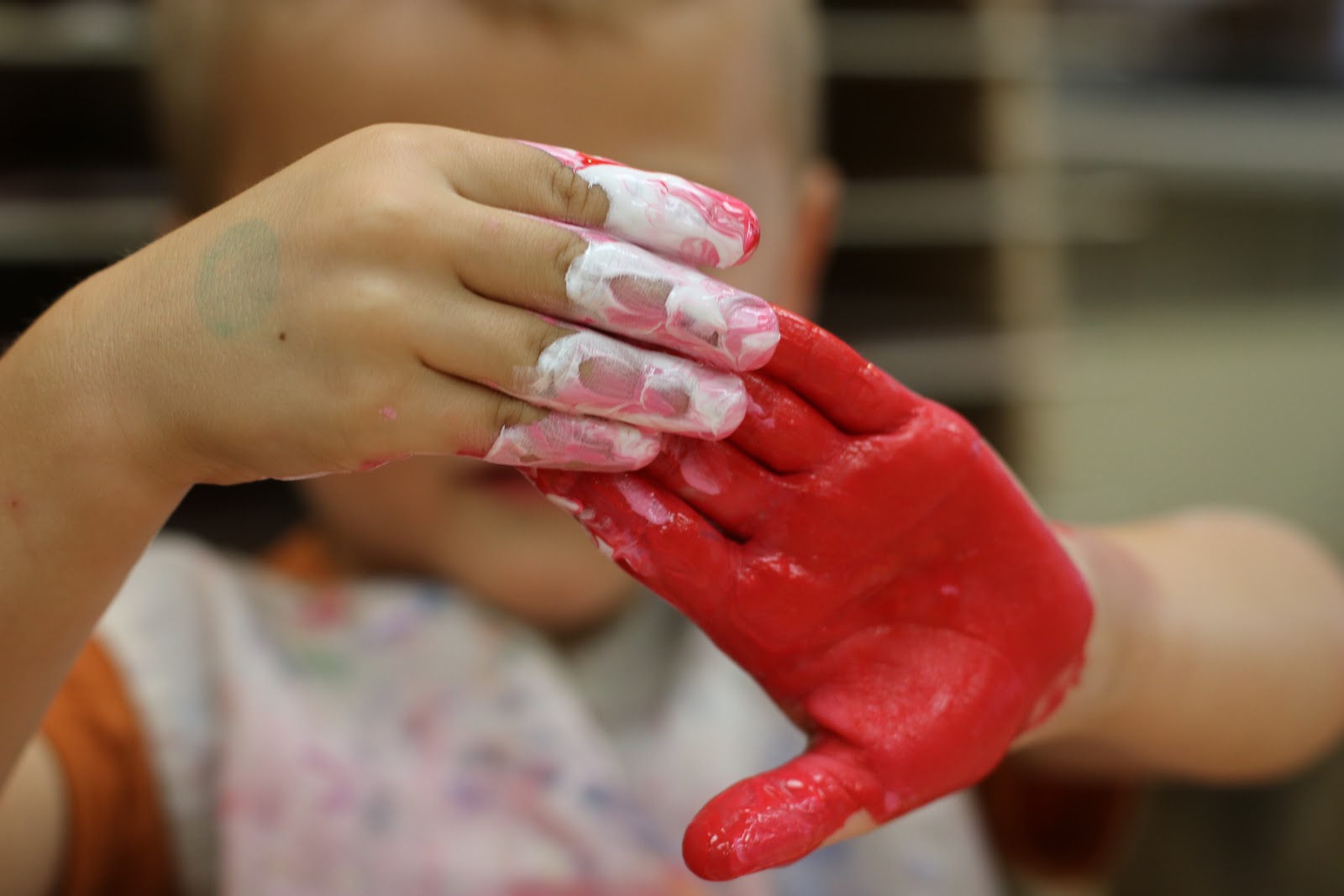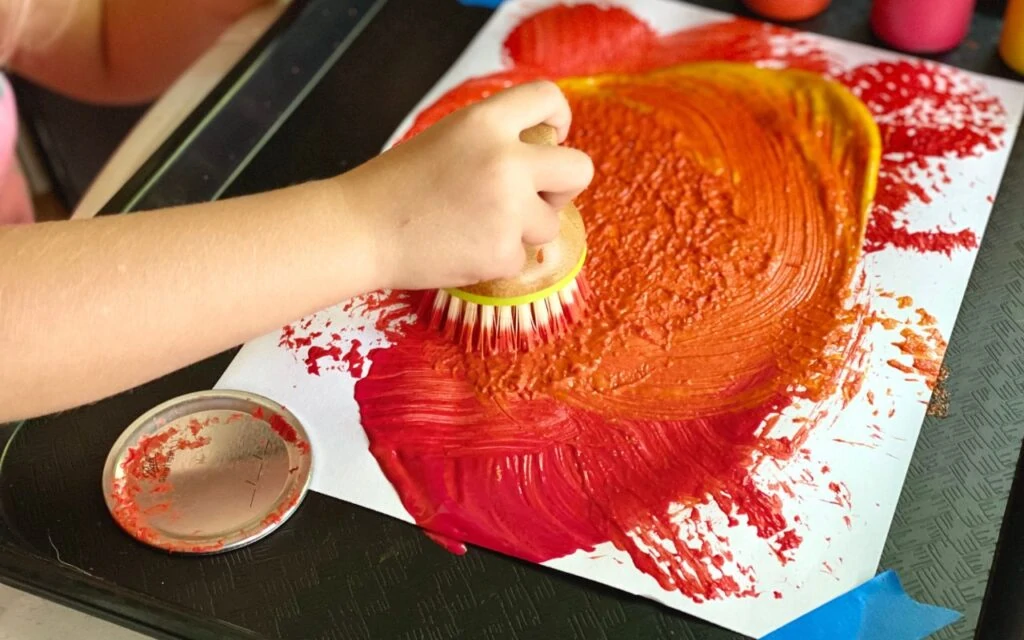
The explore stage is something we need to keep talking about. In a previous post, I talked about the explore stages of clay. Today, I want to share 5 paint invitations that really helped me embrace the explore stage of paint.
Conversation Tip While Painting
The one phrase I removed from my vocabulary when conversing with children about their paintings was, “What is that?”
As hard as it was – it opened the door for much deeper conversations. It also allowed me to see the need for time to explore and create and not just replicate what I wanted them to paint.
Actions we observe in this stage
1. Smearing
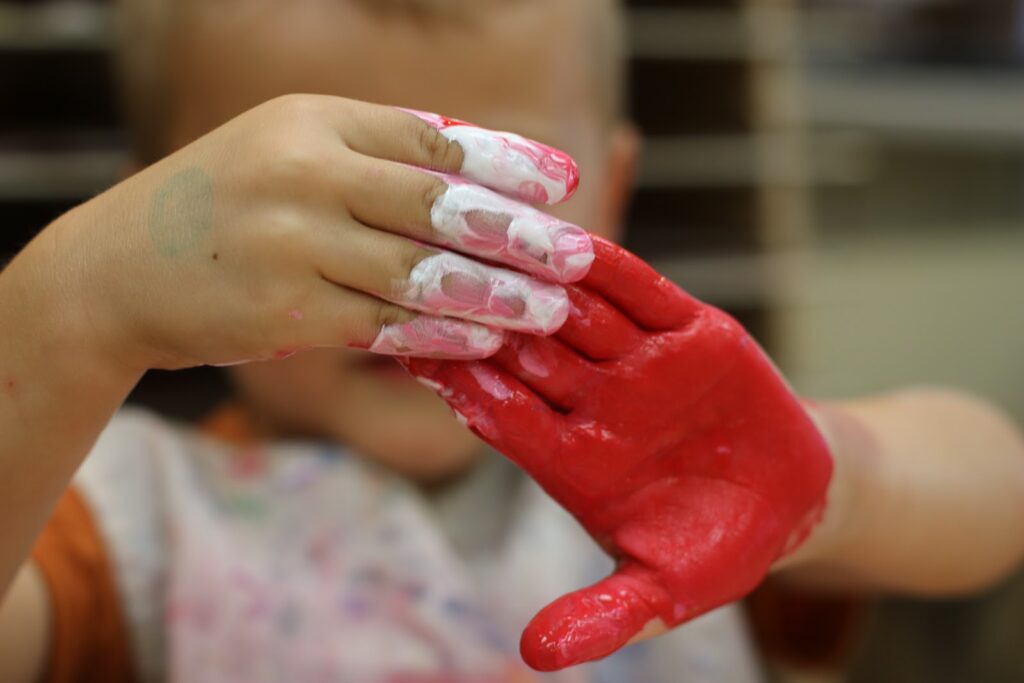
Smearing is when a child takes paint and spreads it across a surface using their fingers or hands in a continuous motion. This action is often used to cover a large area of a surface with paint. Children often enjoy the sensation of smearing paint on paper or other surfaces as this action allows them to explore the texture and consistency of the paint, as well as experiment with different pressure and movements.
Notice how the child is learning about mixing colors all on his own.
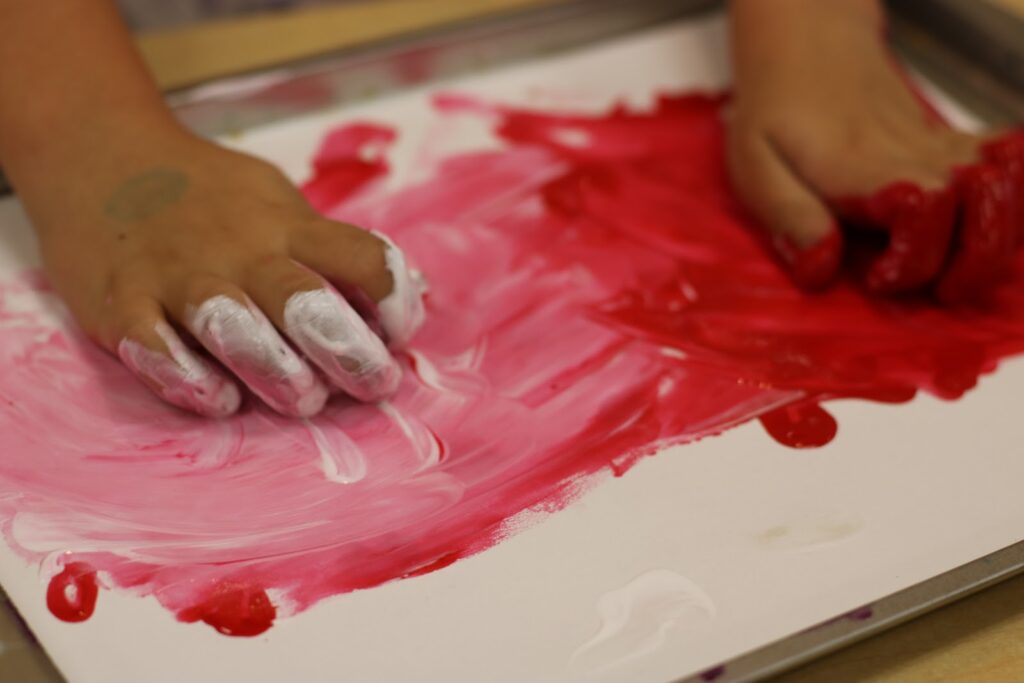
Children may scratch and feel the texture of the paint and surface together.
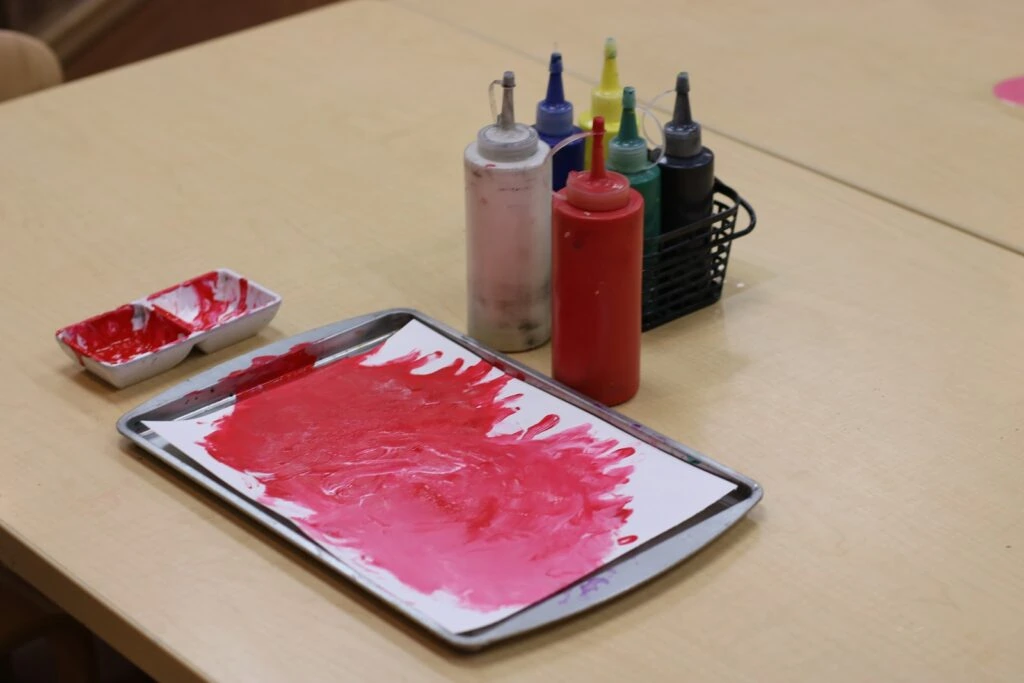
A tray, paper, deep dish palette, and bottle of paint are the materials to help this exploration.
2. Dabbing
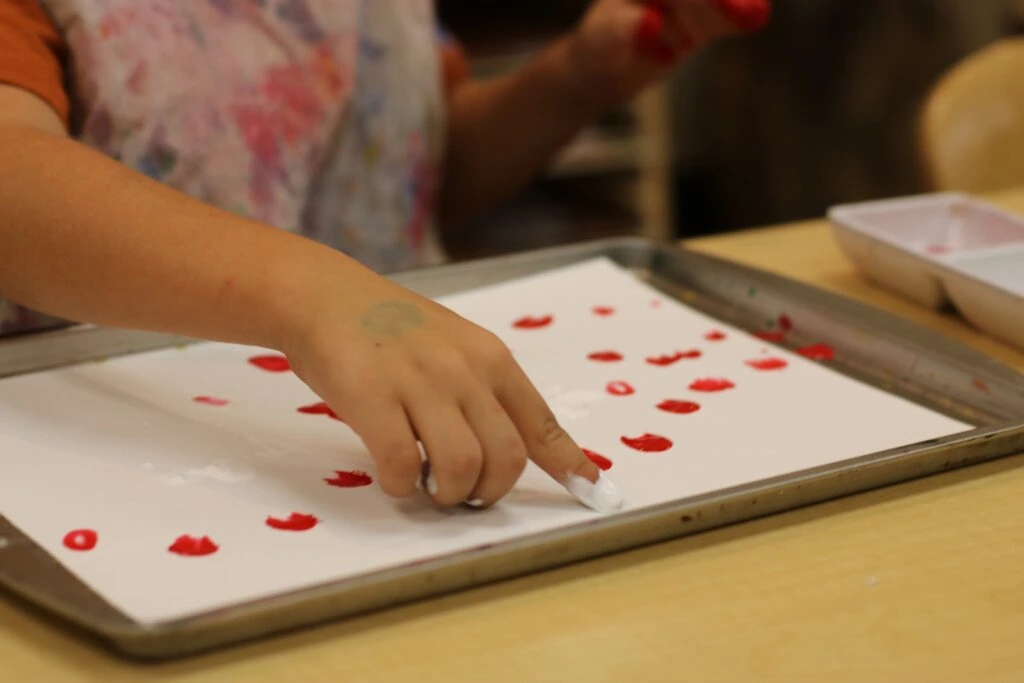
Dabbing is a popular action among young children when using paint. Dabbing is when a child takes a brush or other tool and applies paint to a surface in a series of small, repeated motions. They may use a brush or their fingers to dab paint onto the paper, creating unique patterns and textures. This action helps them develop their fine motor skills, as well as explore the different effects of using various tools and techniques.
3. Mixing
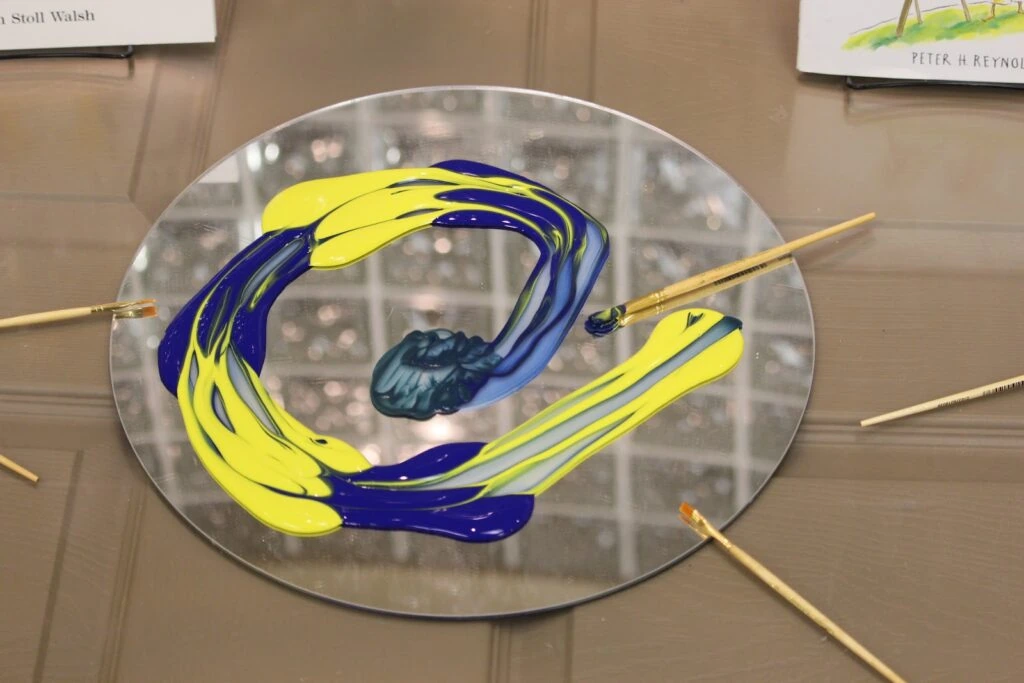
Children may naturally mix different colors of paint together, either intentionally or accidentally. This action allows them to explore color theory and discover new color combinations. They may also enjoy experimenting with the different effects of mixing different colors and shades.
Utilizing a different medium to paint (such as a mirror) provides a whole new experience.
Notice how the mixed colors really come through on the mirror!
4. Splattering
Splattering is a fun and messy action that children often enjoy when using paint. They may use a brush or flick their fingers to splatter paint onto the paper, creating a unique and abstract design. This action helps children develop their gross motor skills and hand-eye coordination.
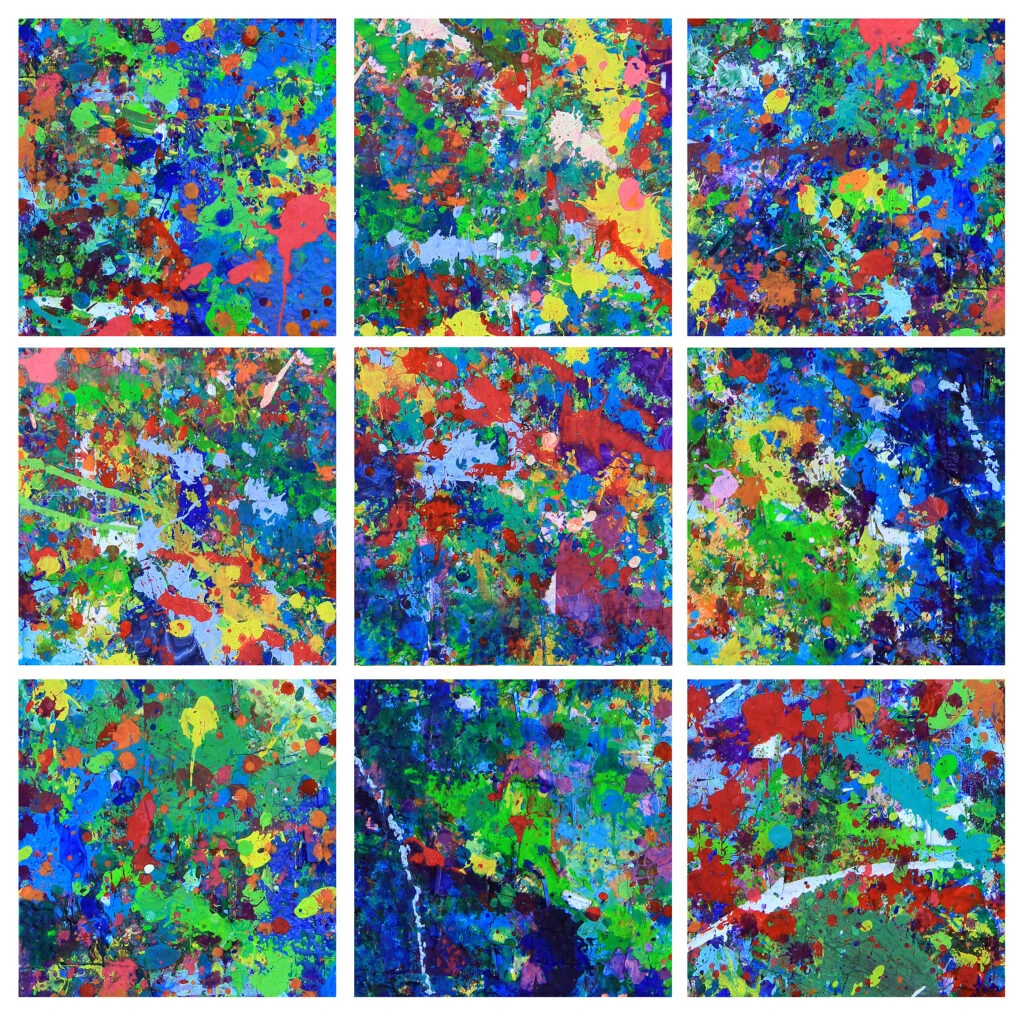
5. Stamping
Children may use various objects to stamp paint onto the paper, such as sponges, blocks, or even their own hands or feet. This action allows them to explore texture and create unique patterns. It also encourages creativity and imagination as they experiment with different stamping techniques.
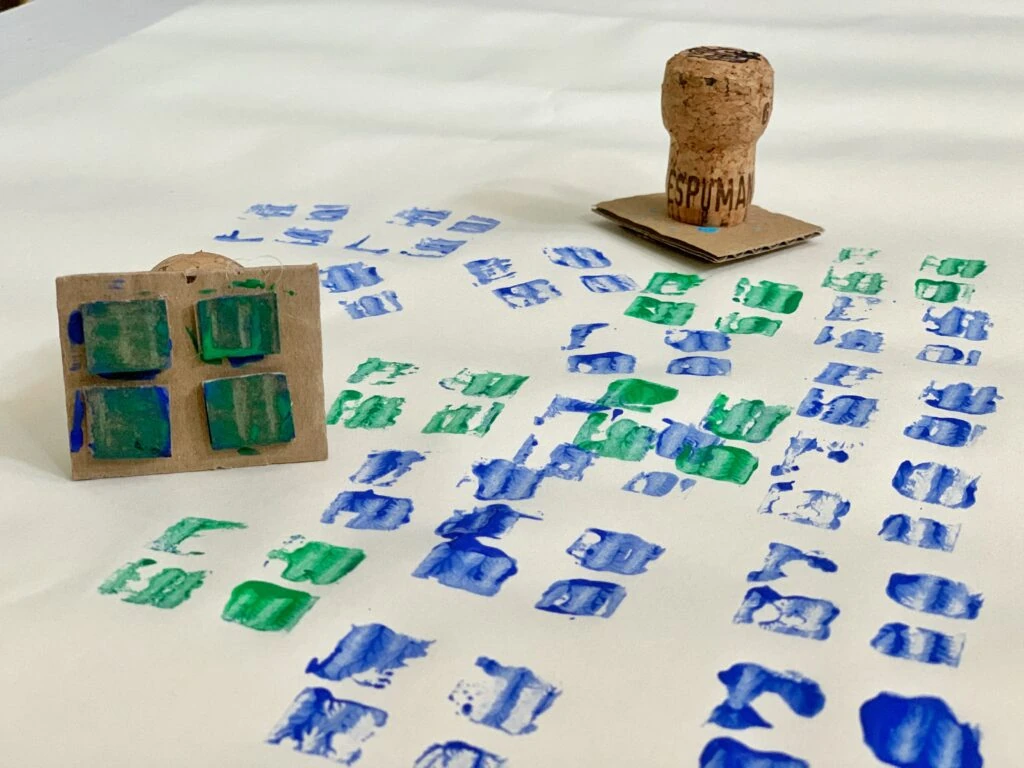
Diversifying Painting Experiences
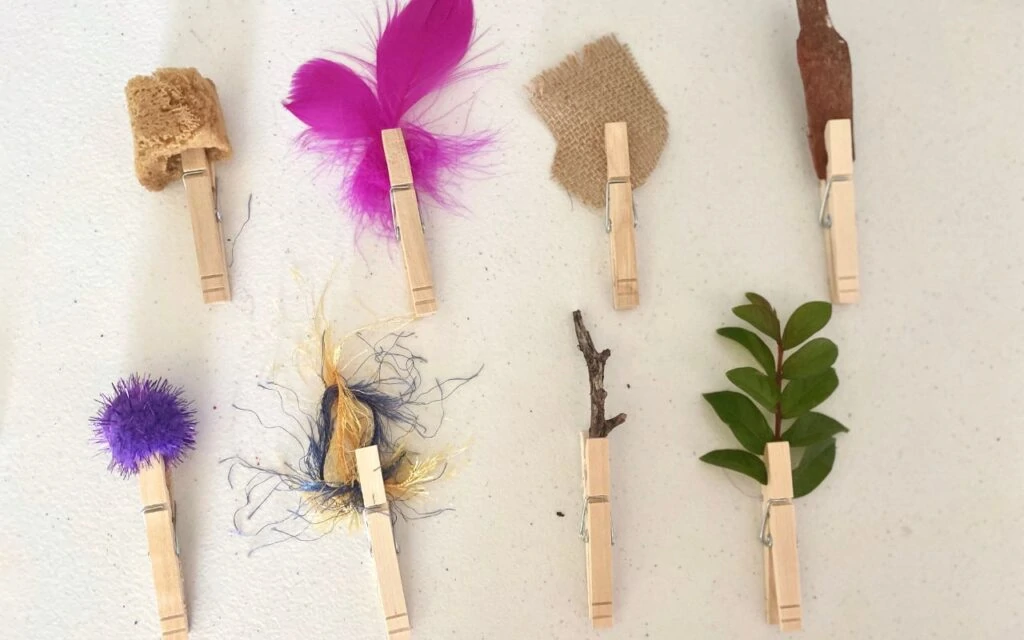
To further enhance children’s exploration of paint, it’s important to offer a variety of materials and settings for painting. You can introduce natural materials such as leaves, flowers, and twigs as paintbrushes, or use a variety of surfaces such as rocks, sticks, or even sandpaper.
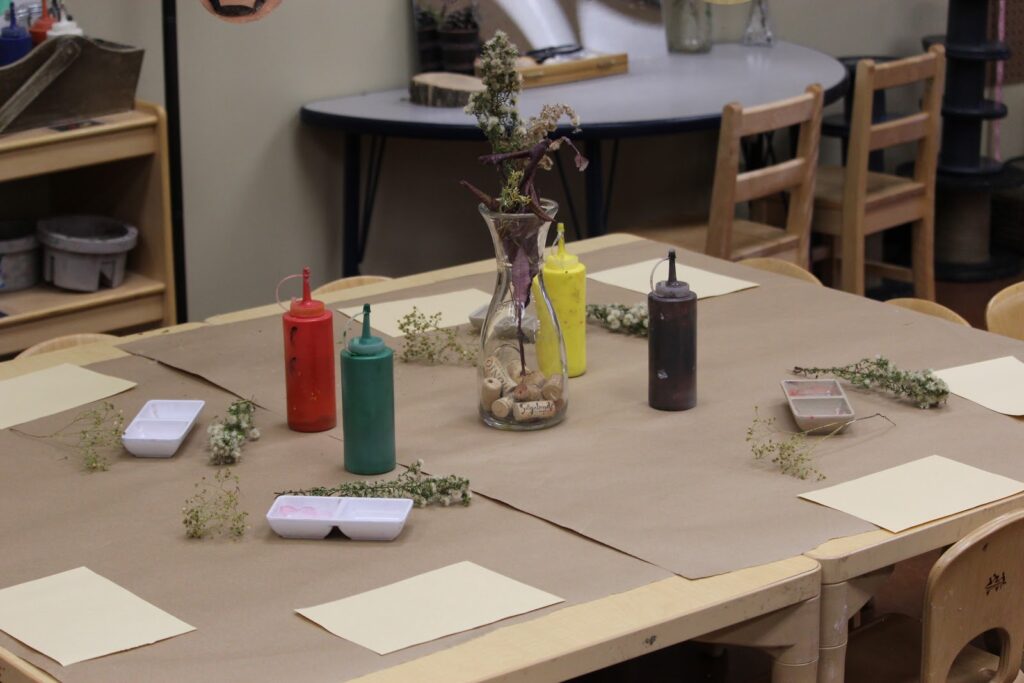
Varying body positions while painting is an important aspect of children’s exploration of paint. Children naturally explore the physical aspects of painting by experimenting with different body positions, such as standing or sitting, crouching, or lying on the floor. These varied positions not only help to engage different muscle groups but also offer new perspectives and angles for viewing their artwork. And you can encourage children to explore their creativity while also developing gross motor skills by offering large easels or oversized paper for example.
Varying body positions also foster a sense of autonomy and independence in children, as they are able to make decisions about how they want to engage with the paint.
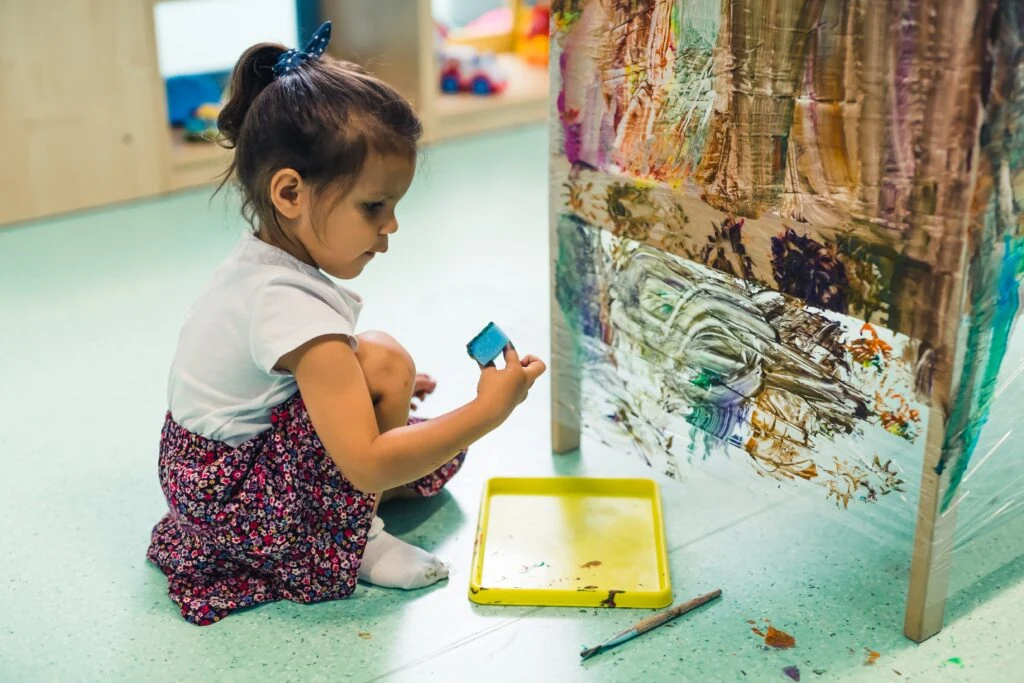
Another way to diversify painting experiences is to take it outdoors. Painting outside can create a connection to nature and inspire creativity. You can also try painting on different surfaces such as tree bark or rocks, or experiment with using different types of natural dyes.
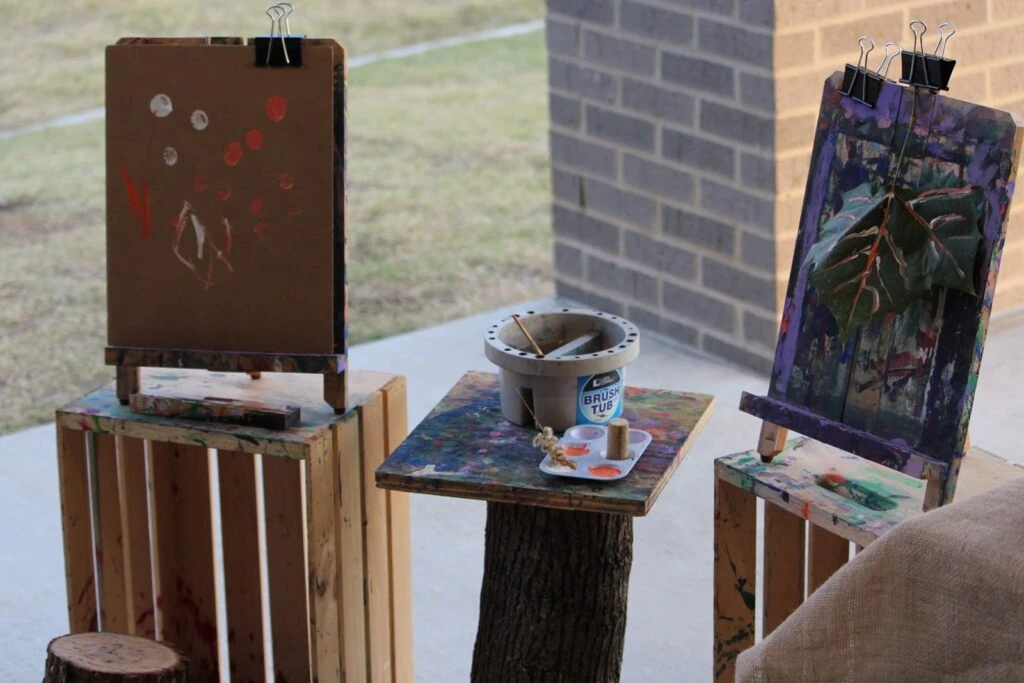
By offering different materials and settings for painting, children can expand their creativity and develop a deeper appreciation for the natural world.
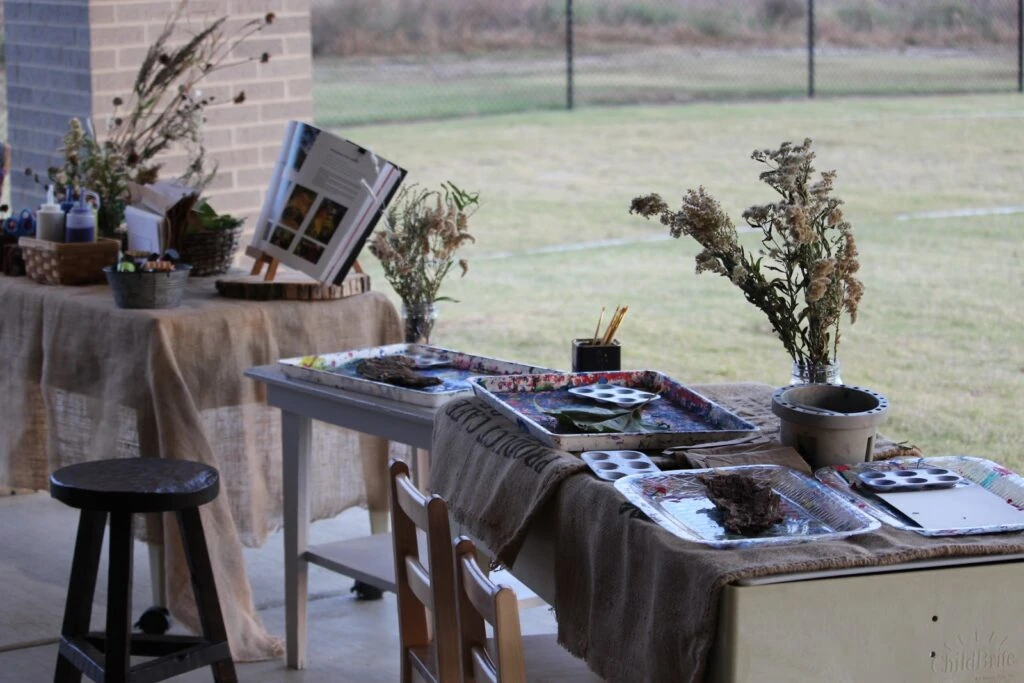
The simple shift from painting indoors to outdoors will heighten their learning and exploration.
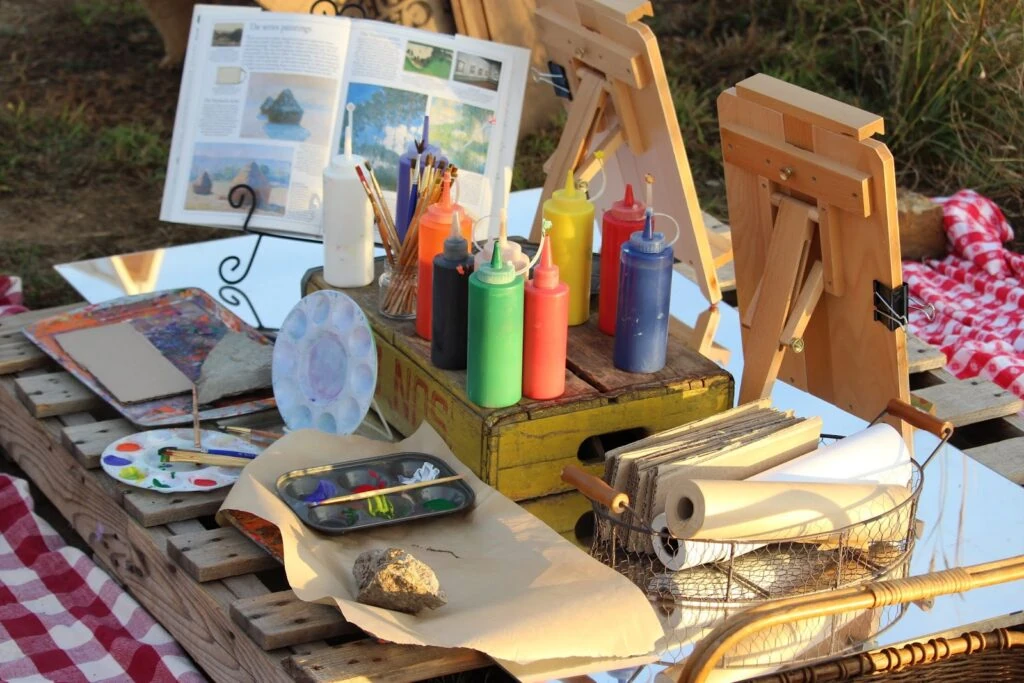
Bringing all the explore elements together outdoors! Stunning!
Benefits of Exploring Paint
Allowing children to experience the language of paint through a variety of exploration actions will:
- Deepen their explorations with paint
- Develop of variety of paint techniques in an authentic way
- Honor the child where he or she is on their journey
- Help us as teachers slow down and really listen to the children and their thoughts
- Embrace the mess by recognizing the sensory importance and artistic expression
- Developing fine motor skills
- Develop creativity and imagination
- Encouraging sensory exploration
- Build their vocabulary and communication skills
Teaching Nugget
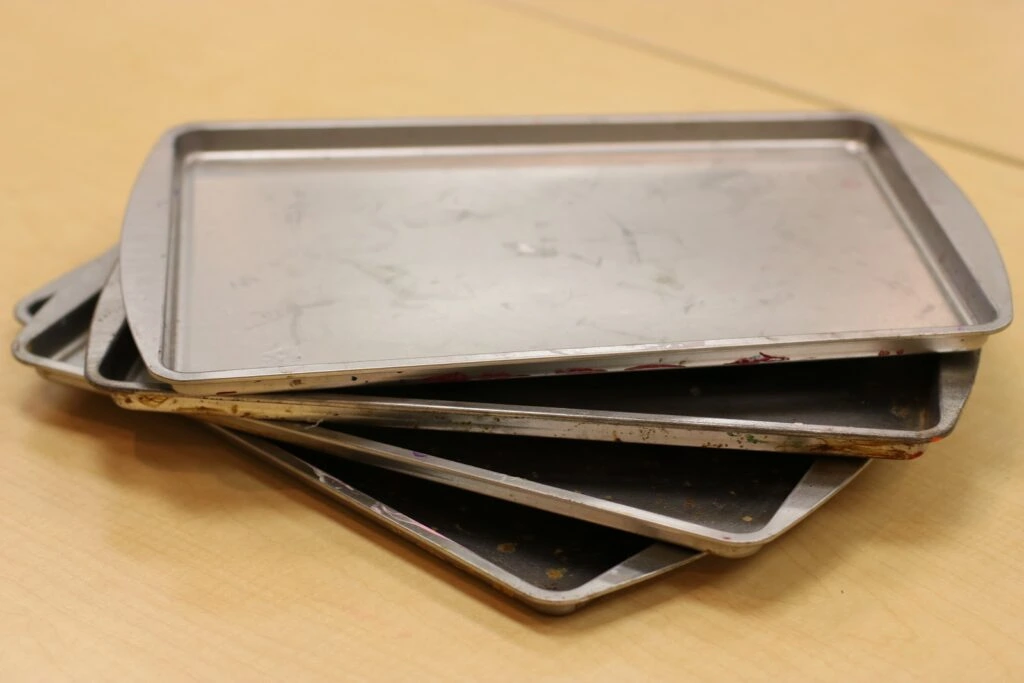
These cookie sheets from the dollar store make for the best paint or collage tray!
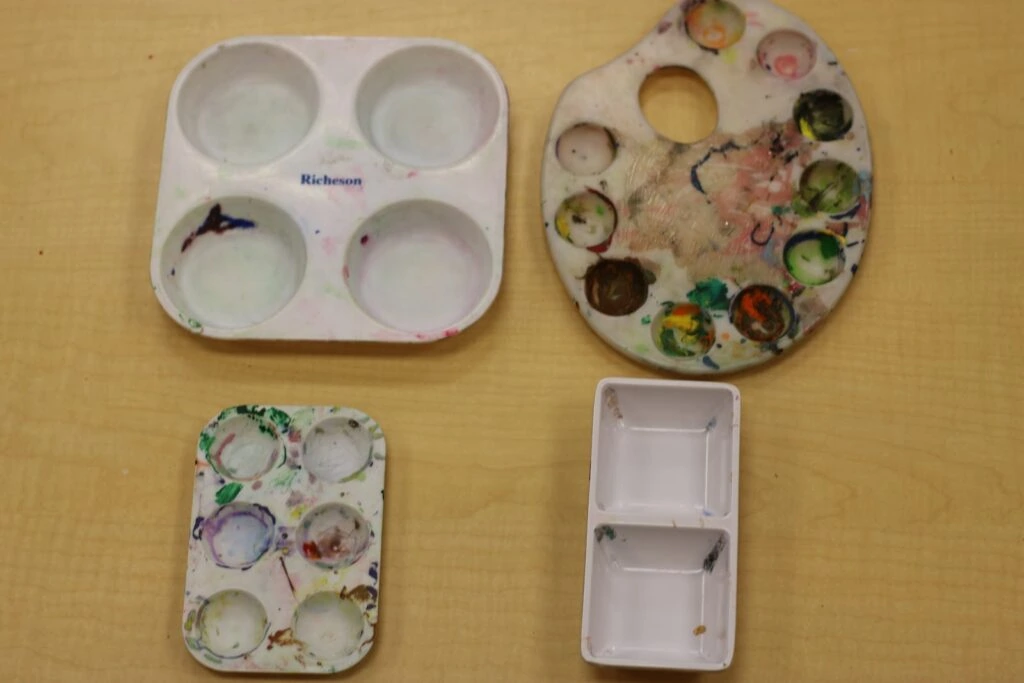
Having multiple palettes or sizes of paint containers is helpful for different types of paintings: fingerpaint, large paper painting, nature painting, etc.
Take Action
- Plan a play invitation for paint exploration.
- Allow children to explore the paint without any set outcomes.
- Observe and take note of what THEY are doing and learning from the paint.
- Use the observations to plan future atelier provocations or invitations to play.
- Embrace the mess and honor the children’s journey by providing ample time and space for paint exploration.
- Encourage children to express themselves and develop their own unique style with the paint.
By taking these actions, we as educators can support children’s development and learning through their explorations with paint, and help them to cultivate a lifelong love of creativity and artistic expression.
You might also be interested to read our blog post about the exploration stage of clay.
References
Duffy, Bernadette (2006). Supporting Creativity and Imagination in the Early Years. Open University Press.
Haughey, Sally (2019). Wonder Art Workshop: Creative Child-Led Experiences for Nurturing Imagination, Curiosity, and a Love of Learning. Quarry Books.
Pelo, Anne (2007). The Language of Art: Inquiry-Based Studio Practices in Early Childhood Settings. Redleaf Press.
Wright, Susan (2010). Understanding Creativity In Early Childhood. SAGE.
